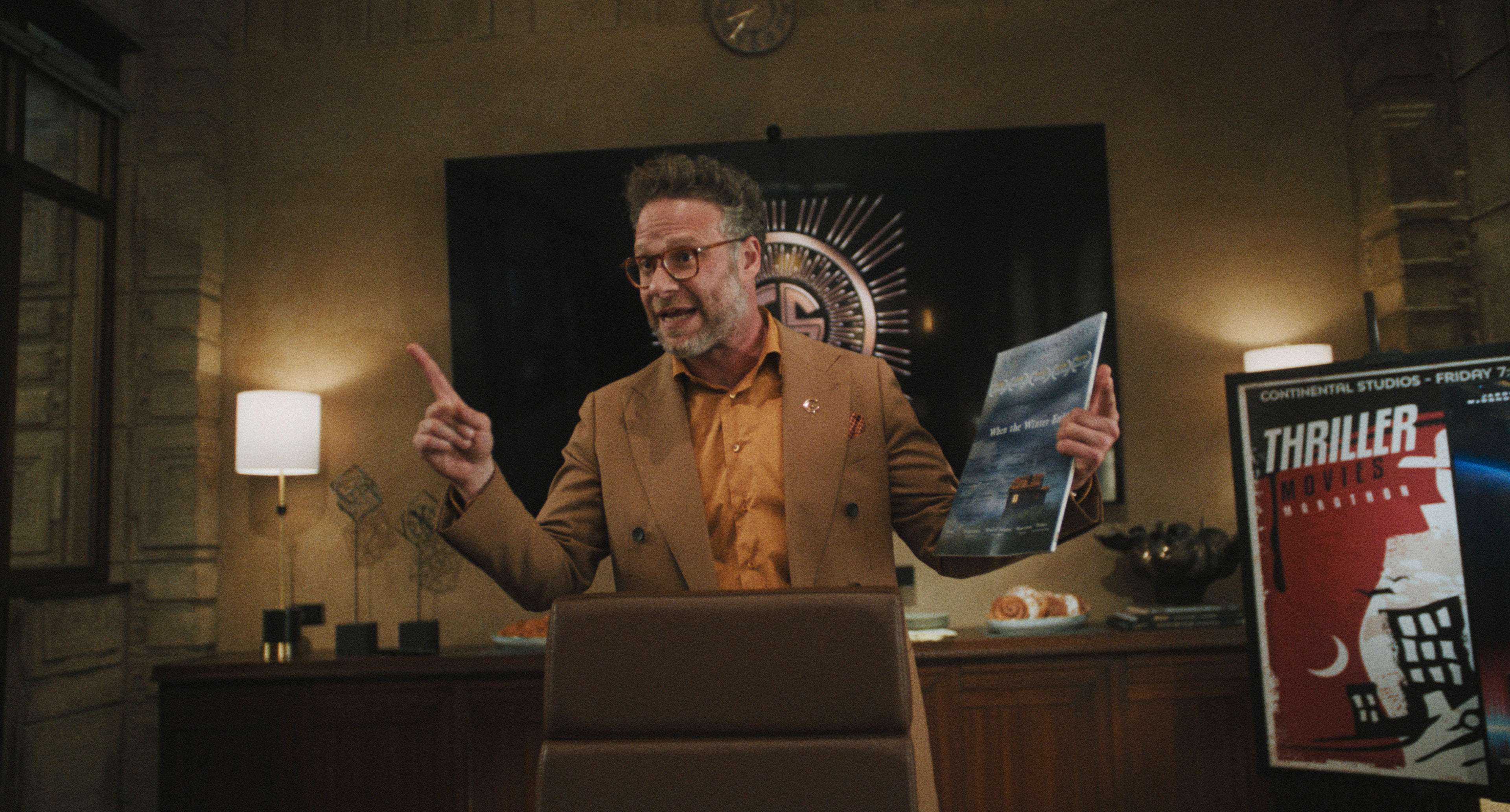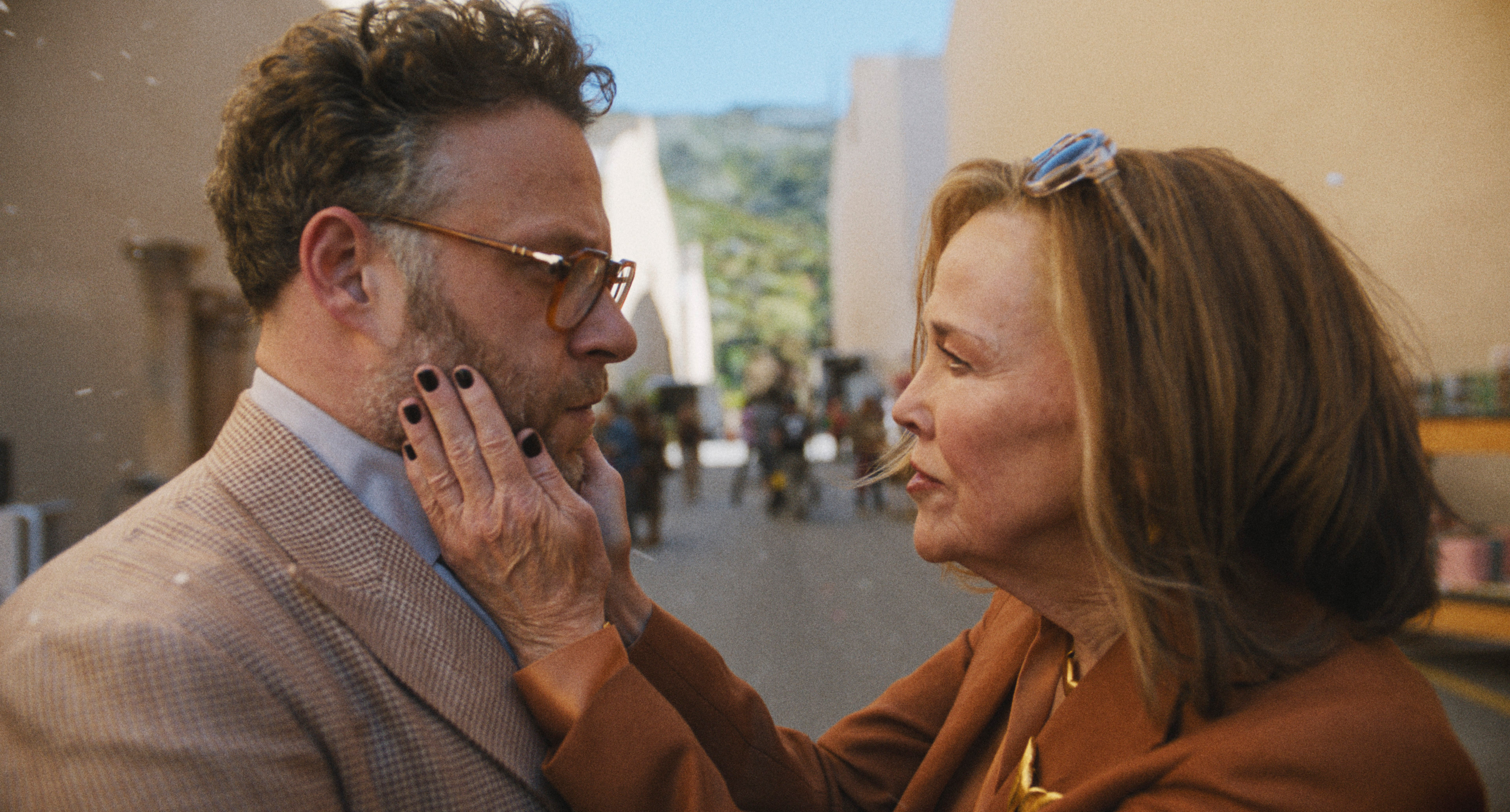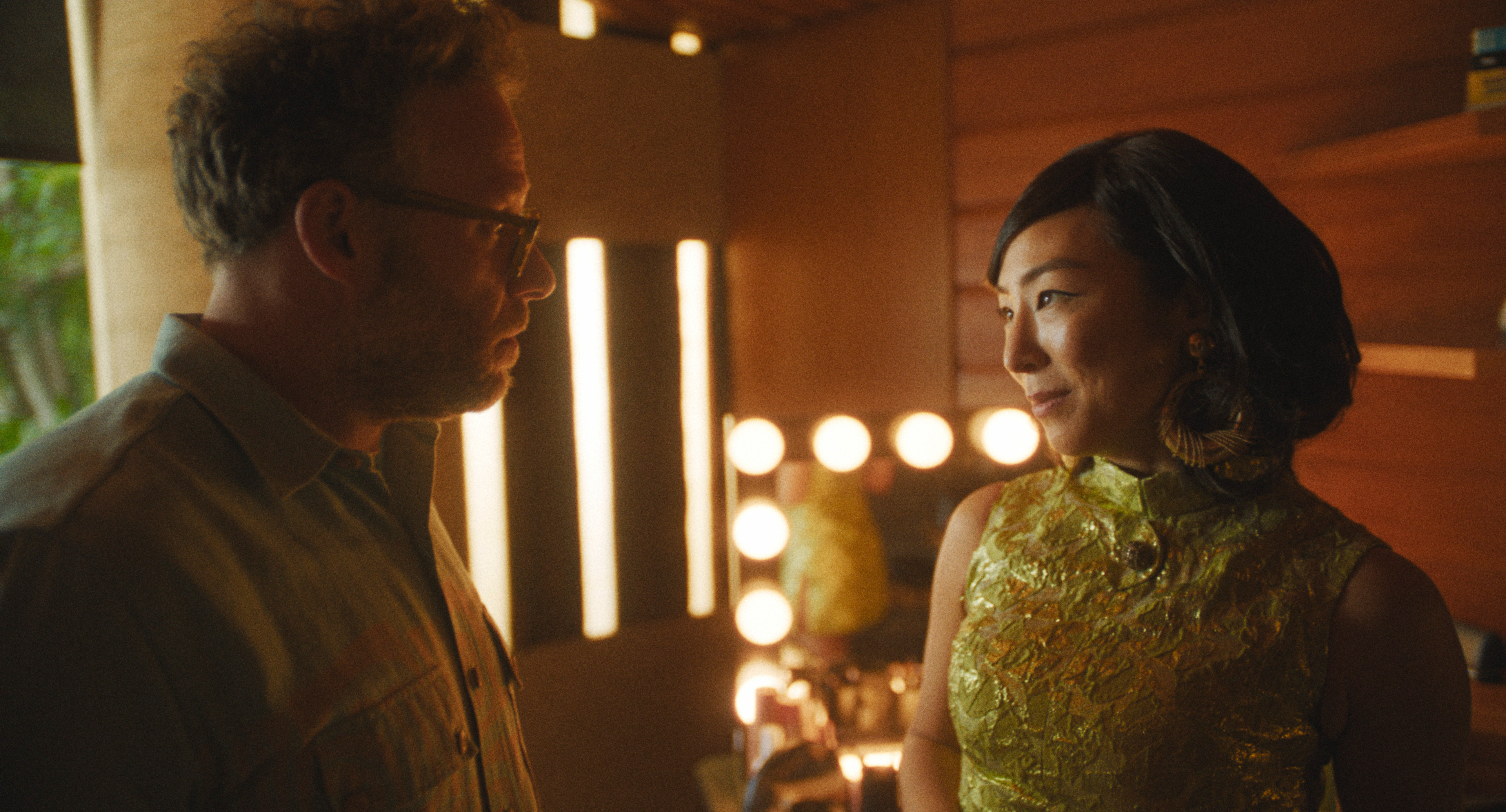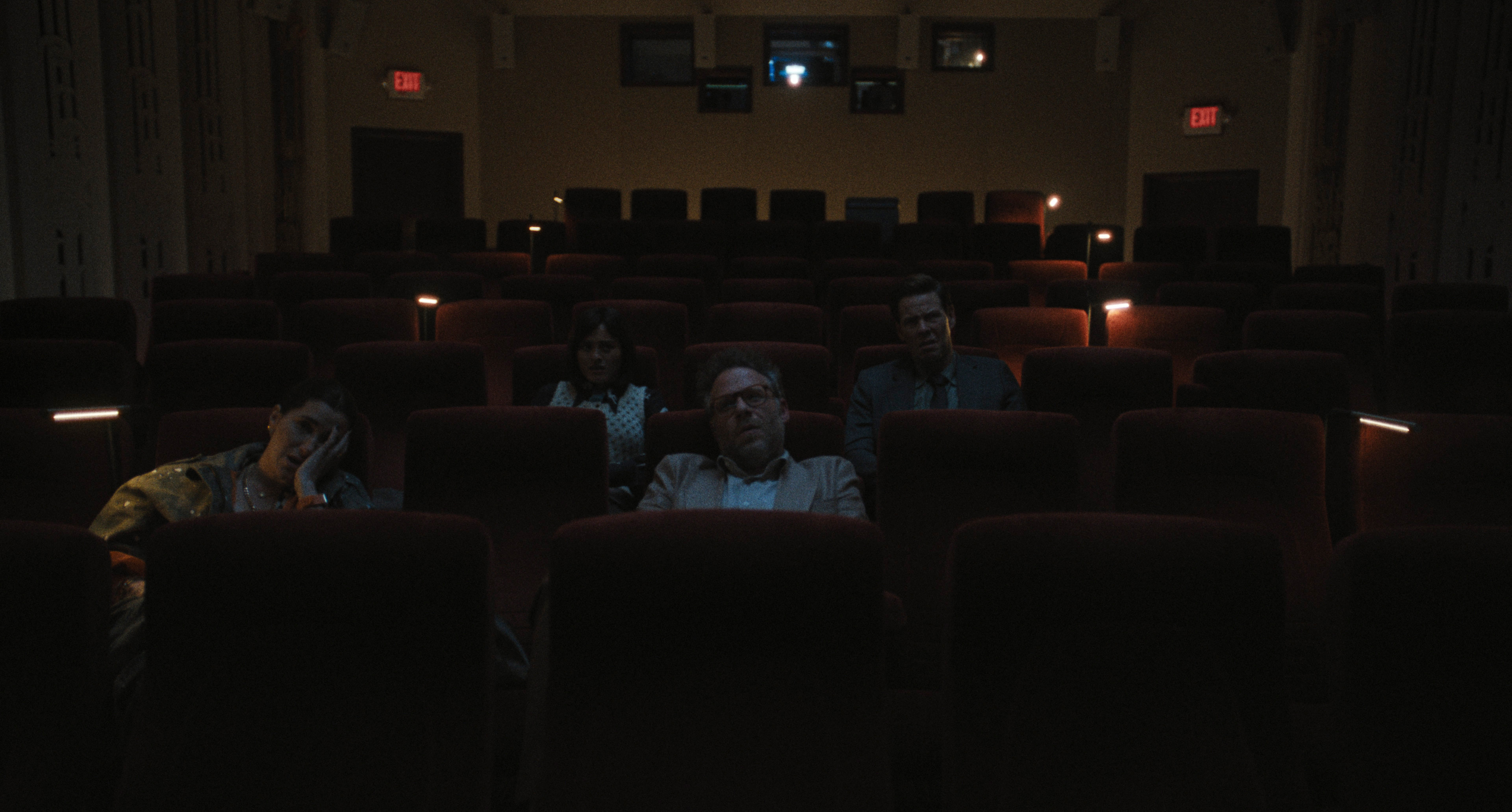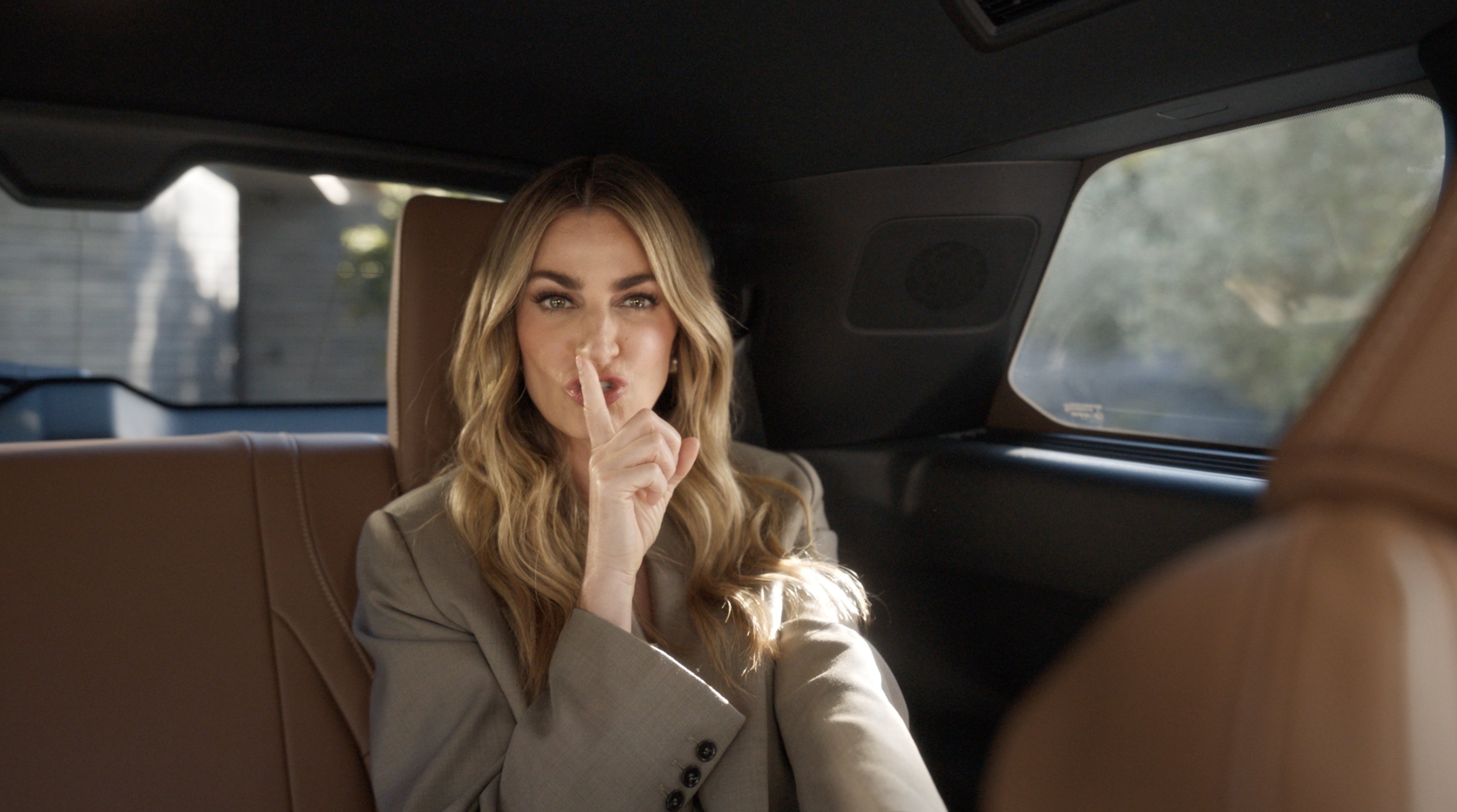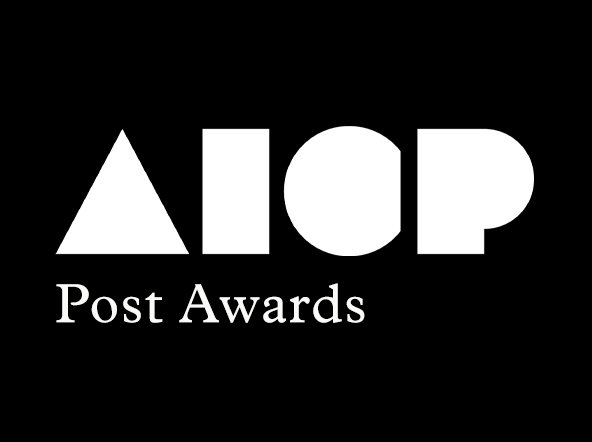One Camera, One Lens: How The Studio Built a Show on the Oner

By Ellie Powers
When Seth Rogen and Evan Goldberg approached cinematographer Adam Newport-Berra with The Studio, their Apple TV+ series about a studio head juggling corporate demands with creative ambitions, they had a lofty request: roughly four and a half hours comprised solely of oners—single, unbroken takes. Adam summarizes their pitch: “Every scene is one shot, and we’ll only use one camera with one lens.” Despite the daunting task, he embraced the challenge: “I think working within the confines of restrictions actually makes better work and makes you more creative.”
The oner has garnered a reputation as an art form in and of itself. Just ask Seth Rogen’s character, Matt Remick, who, while watching Sarah Polley’s crew shoot a oner (a oner within a oner), muses:
“It’s just a treat. It’s like being with P.T. Anderson on the set of Boogie Nights when they shot that opening oner. Or being on the set of Touch of Evil with Orson Welles as he shot the car bomb scene. Or being on the streets of Cuba as they shot the funeral sequence in Soy Cuba.”
Oners tend to define films because of their technical and artistic impact. The next time you discuss Goodfellas with someone, chances are one of you will bring up the famous long take of Ray Liotta and Lorraine Bracco walking through the kitchen. In The Studio, the pilot closes with Matt and Sal Sapperstein (Ike Barinholtz) watching that very scene, martinis in hand, discussing how genius Martin Scorsese is.
But beyond the homage, The Studio uses the oner as a storytelling tool—one that required Adam and his team to design intricate, seamless sequences. The series opens with a six-minute unbroken shot that start with a “movie within a movie”—a snowy action sequence—then the camera pulls out to reveal the set, where studio exec Matt Remick shakes hands with director Peter Berg and Paul Dano (both playing themselves). The camera follows Matt as he leaves with his assistant Quinn (Chase Sui Wonders), tracking them on a golf cart through the studio lot. The shot continues into the studio office, up the stairs, past Sal, and into Matt’s office—all in one shot.
Three locations. Four main characters (and two cameos). One golf cart. No cuts.
Solving the Oner Puzzle
To pull off these sequences, Adam, key grip Adam Kolegas, and camera operator Mark Goellnicht had to design ways to keep the camera fluid yet unobtrusive. They chose the Alexa 35 with a 21mm wide lens, which would be adaptable to the various lighting setups, focal lengths, and movements required, and they stuck with that configuration for every oner.
More than just a technical feat, the show’s comedic timing depended on these long takes. Without the edit as a safety net to tighten performances, the cast and crew relied heavily on rehearsals to refine blocking, camera movement, and even punchlines. If a joke or moment didn’t land, rather than fixing it in post, the team had to adjust the scene on the spot—either tweaking dialogue or shifting the camera to maintain momentum.
Adam described how different this process felt compared to traditional shoots:
“It’s quite cool to be on set and to basically watch the show live. And it’s fun for me as a cinematographer because I get to be involved in the edit, live on set. It’s also terrifying. Sometimes when you're shooting, you can say, ‘This part of the scene is a little slow, but we’ll fix it in the edit later.’ For The Studio, if something isn’t hitting, it’s gone. There’s no point in shooting it, because everything we shoot will end up in the show.”
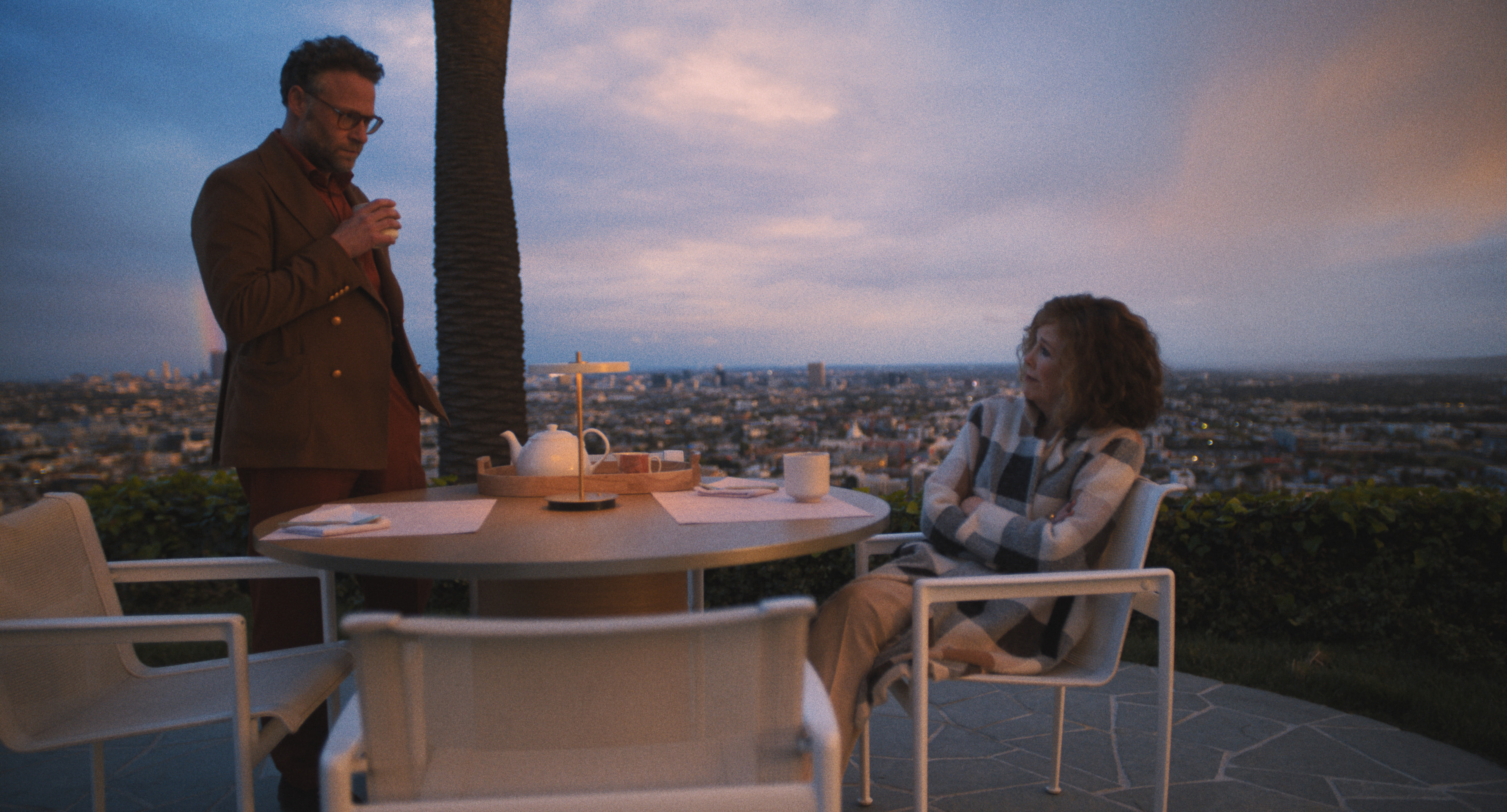


Lighting a 360° Set
Another challenge was ensuring that the camera could spin 360° in every shot without exposing lights or crew. Production designer Julie Berghoff collaborated closely with Adam to design sets that looked realistic from every angle. To achieve this, they lit scenes using natural light where possible, mixing in practicals (like streetlamps) to add color, contrast, and depth.
“We tried to move the camera as much as we could to see as much of the world as possible,” Adam explains. “We ensured the camera felt untethered and could spin in any direction. The crew was always ready for that, and Julie’s sets meant we could look in any direction.”
To maintain a cohesive visual style, Adam worked with Harbor colorist Damien Vandercruyssen. Given that some episodes—like episode two, “The Oner,” which features a oner of the shooting of a oner—were shot over multiple days but needed to appear as a single real-time sequence, Damien’s role was crucial in ensuring consistent lighting and color continuity.
For instance, one scene takes place over 30 minutes from sunset into night but was shot over four days. Adam describes the challenge:
“We had to make that transition feel believable but also strong enough that it really resonated. And I think that's a fine line to dance on.”
To help unify the look, Adam and Damien opted for a versatile filmic LUT that could be subtly adjusted depending on the location. Damien explains: “Because of the amount of set ups we opted for a nice filmic LUT as a starting point that could be pushed in different directions, depending on the location. During the final grade, I applied a lot of keyframes to ride exposure and change color temperatures during these long takes. I also had to completely change my timeline to allow these grades to overlap on certain shots. It was a tricky challenge, but also very exciting to be part of such a unique visual style.”
Poking Fun at Hollywood Tropes
One of the show’s most clever visual gags comes in the "movie within a movie" sequences. Unlike the rest of the series, which uses a spherical lens, Adam switched to an anamorphic lens for these moments to mimic exaggerated Hollywood filmmaking tropes—complete with lens flares and moody, over-the-top lighting.
“I didn’t have a specific reference for that shot, just the look that everybody has in our collective unconscious that makes you say, ‘yeah, I’m watching a movie,” Adam laughs.
During preproduction, he studied frames from Robert Altman’s The Player and Mikhail Kalatozov’s Soy Cuba and The Cranes Are Flying to draw inspiration for camera movement and composition.
By the time the series hit post-production, Adam and Damien found they only needed to tweak the visuals—most of the work had already been done on set, a testament to the careful planning and collaboration across departments.
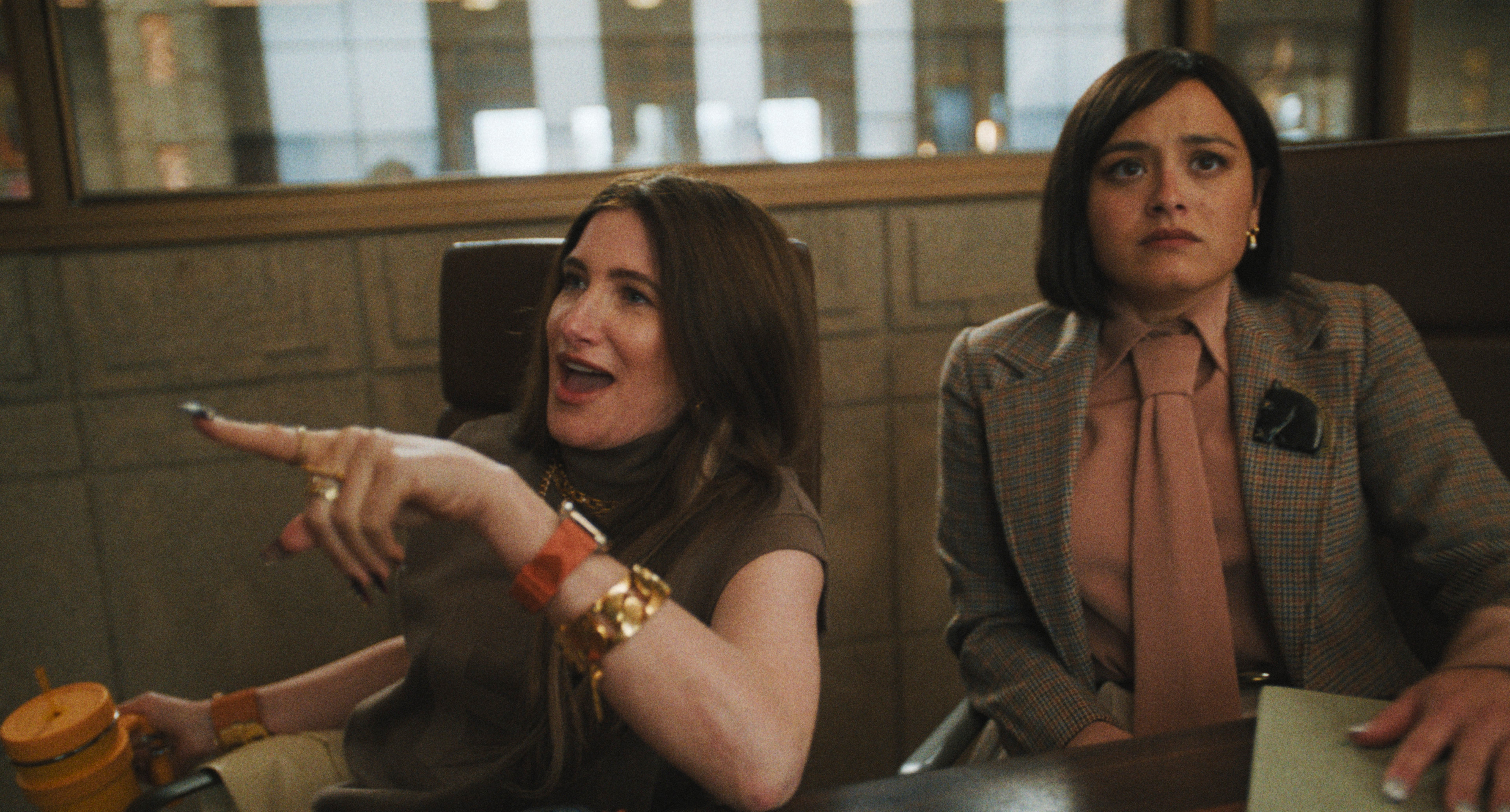
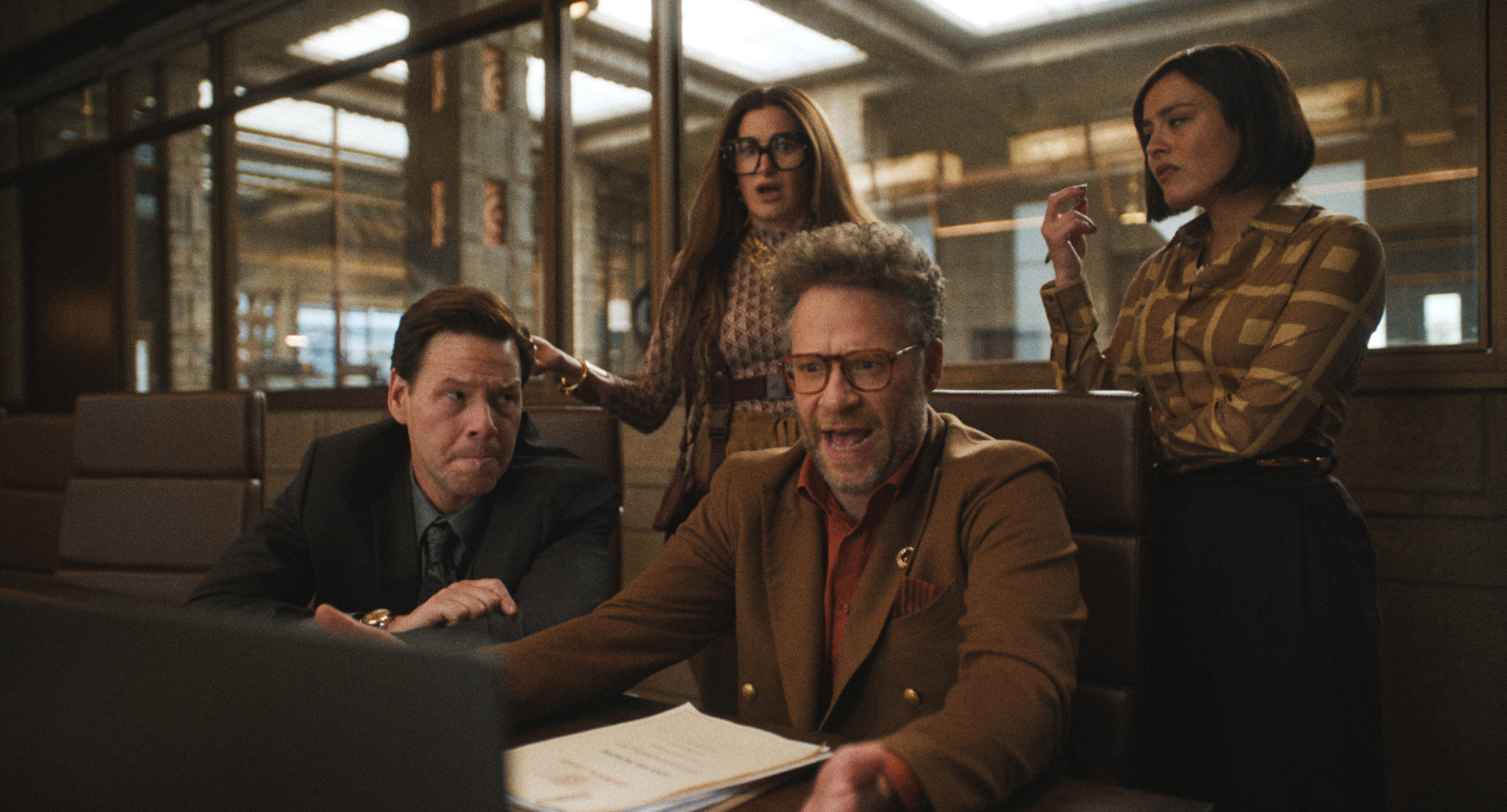
A Cinematic High-Wire Act
With just one camera and one lens, Adam Newport-Berra and his team achieved a daunting task: an entire television series built around unbroken, meticulously choreographed long takes. While minor trims were made at the heads or tails of scenes, the true editing happened live on set.
One key reason they pulled off this cinematic magic trick: a complete buy-in from every department—from lighting to production design to costume to acting—under the leadership of Seth Rogen and Evan Goldberg.
“Seth and Evan always took full responsibility for whether a scene worked or not, and we rallied around them to make it work,” Adam reflects.
Through a combination of technical innovation, seamless collaboration, and a little look development help from Damien Vandercruyssen, The Studio composes a love letter to Hollywood through ten episodes of fast-paced, high-pressure filmmaking—all in one take.

